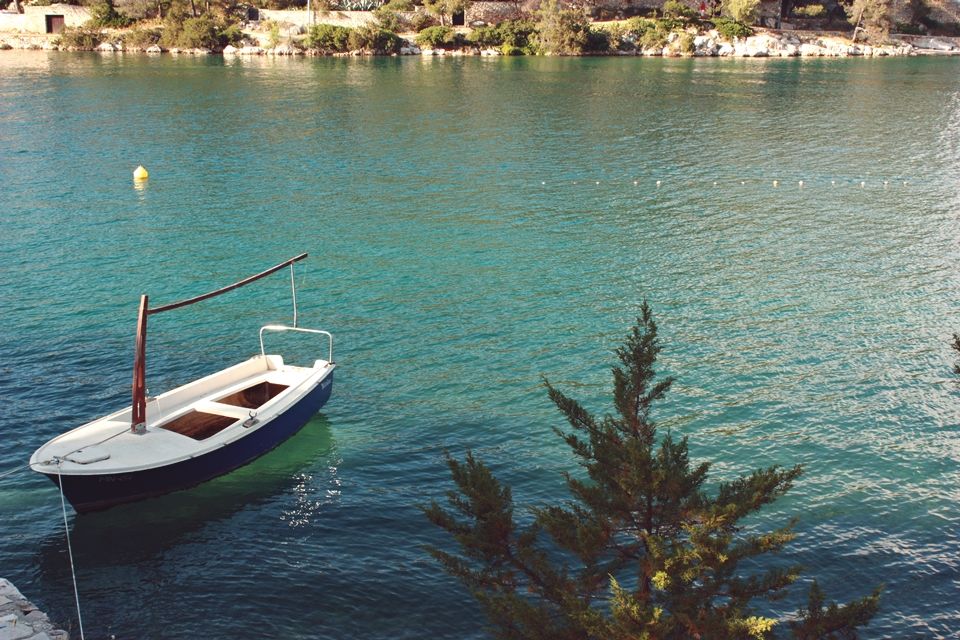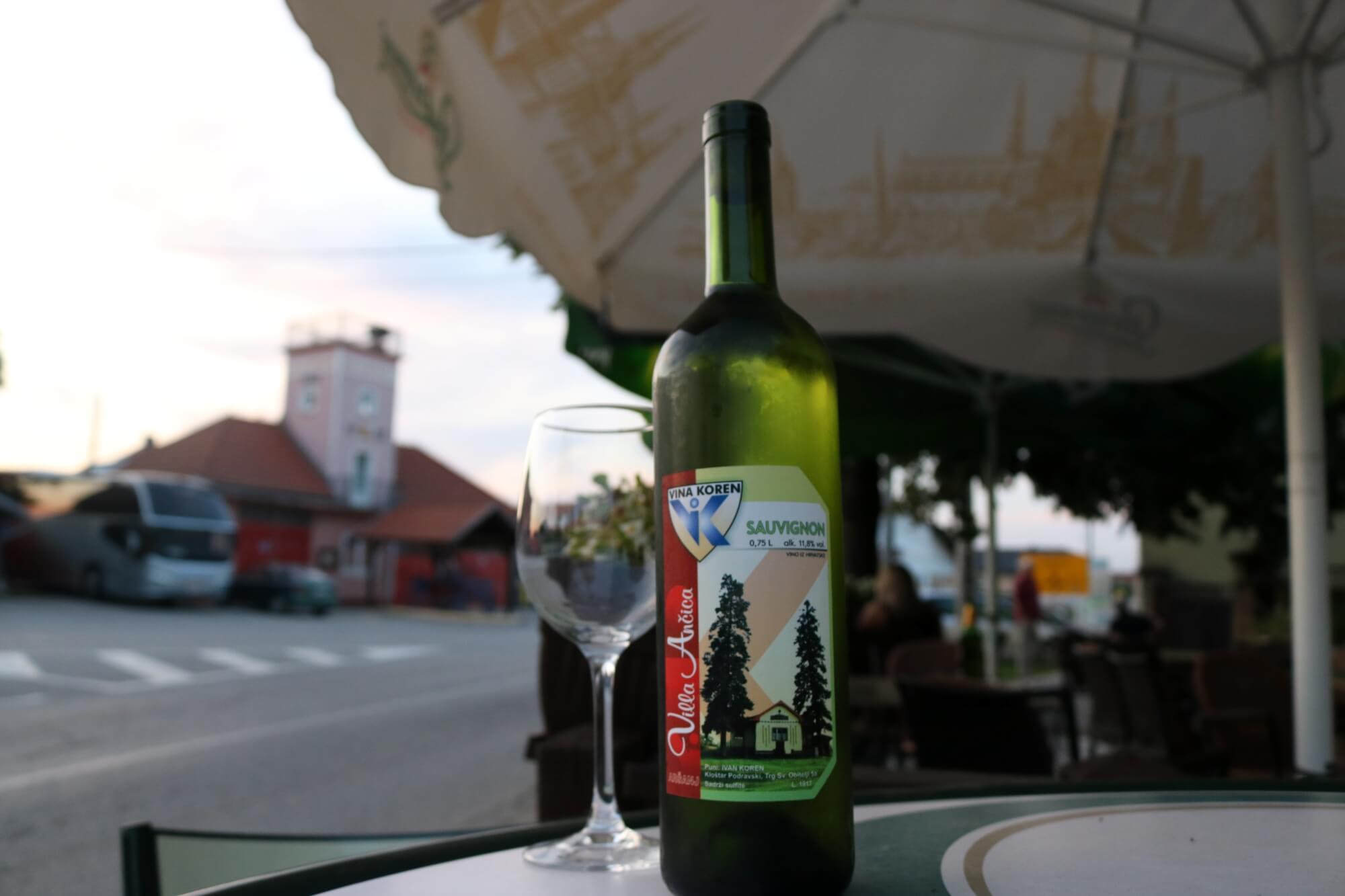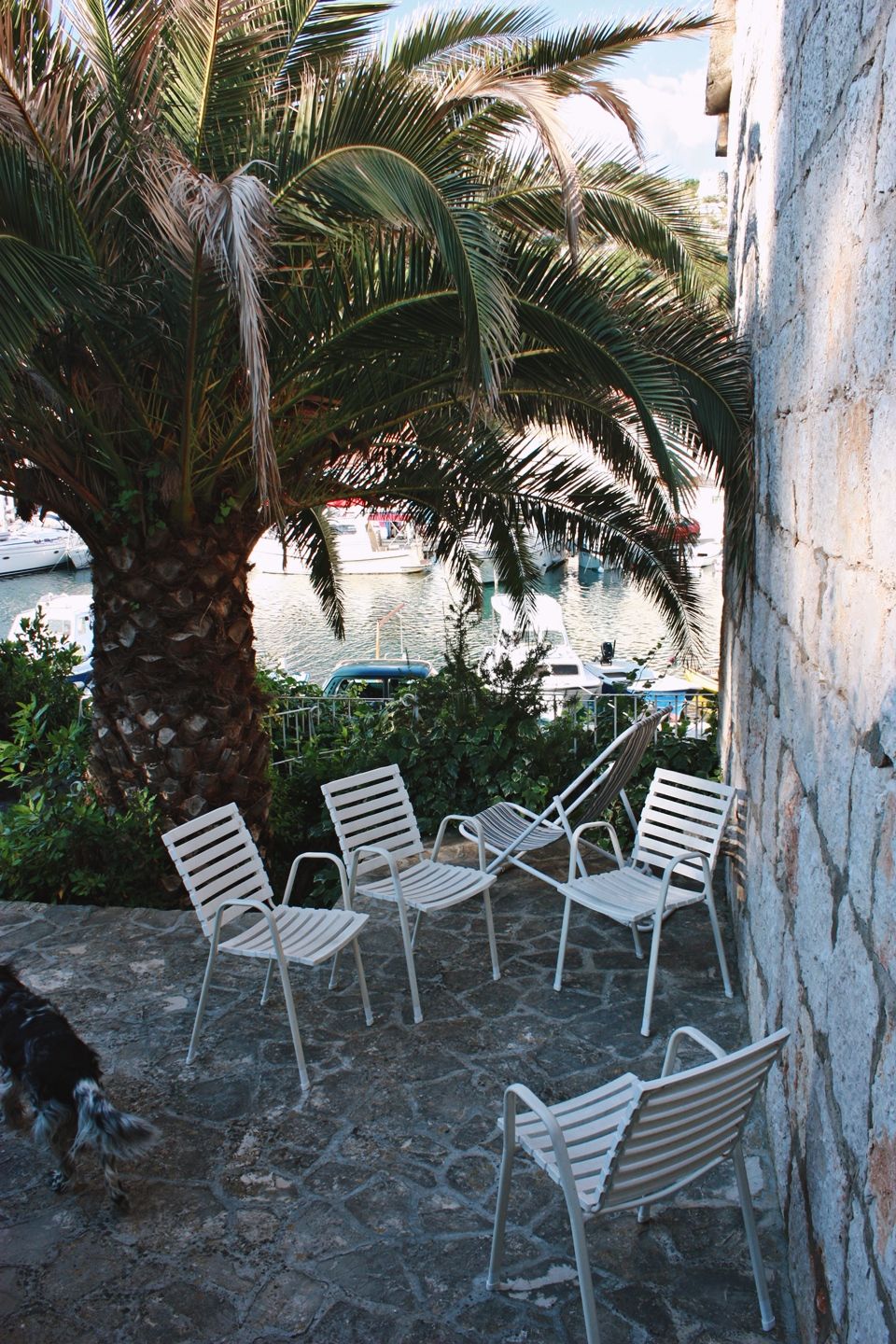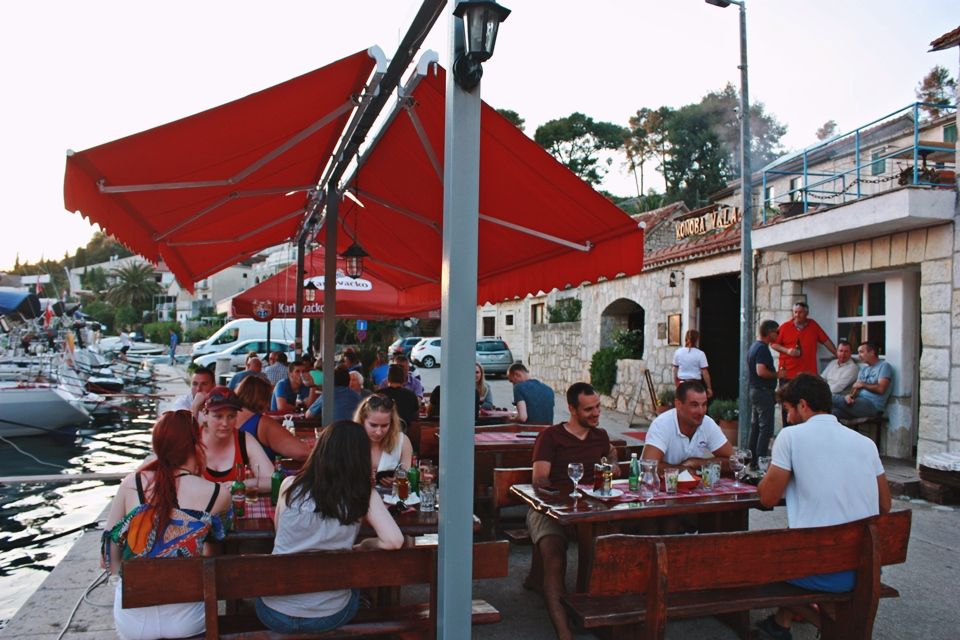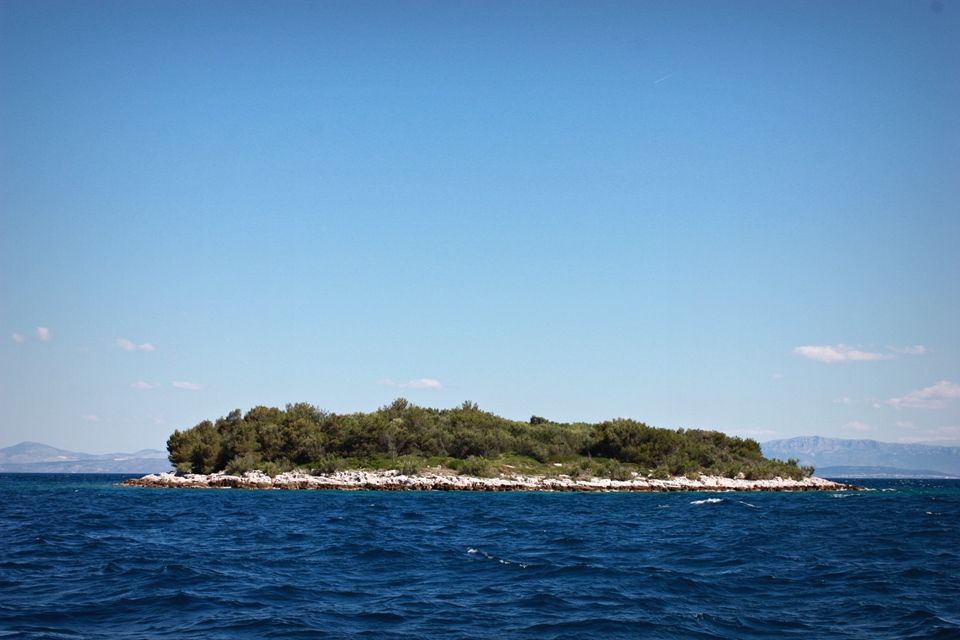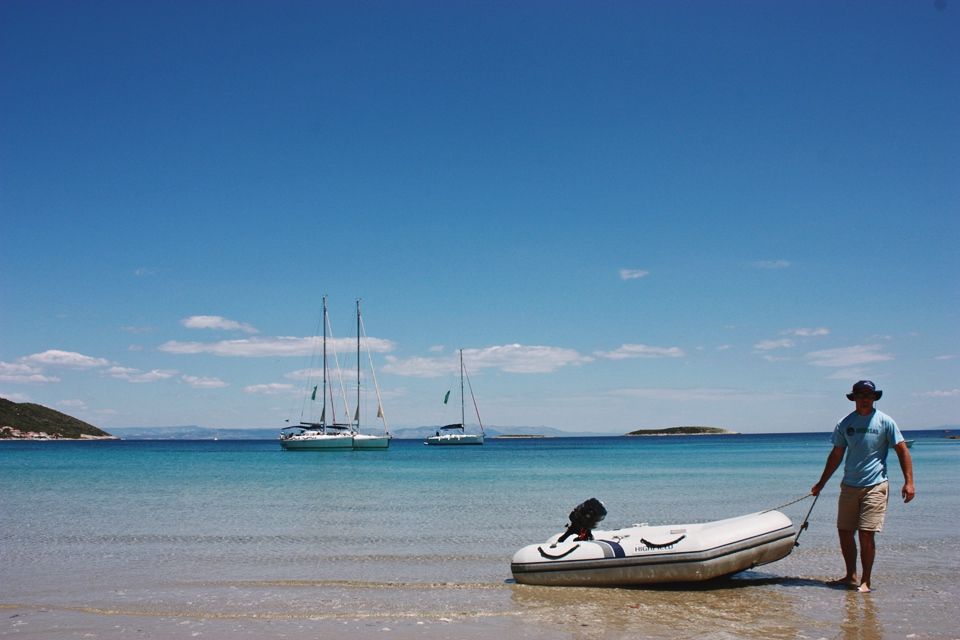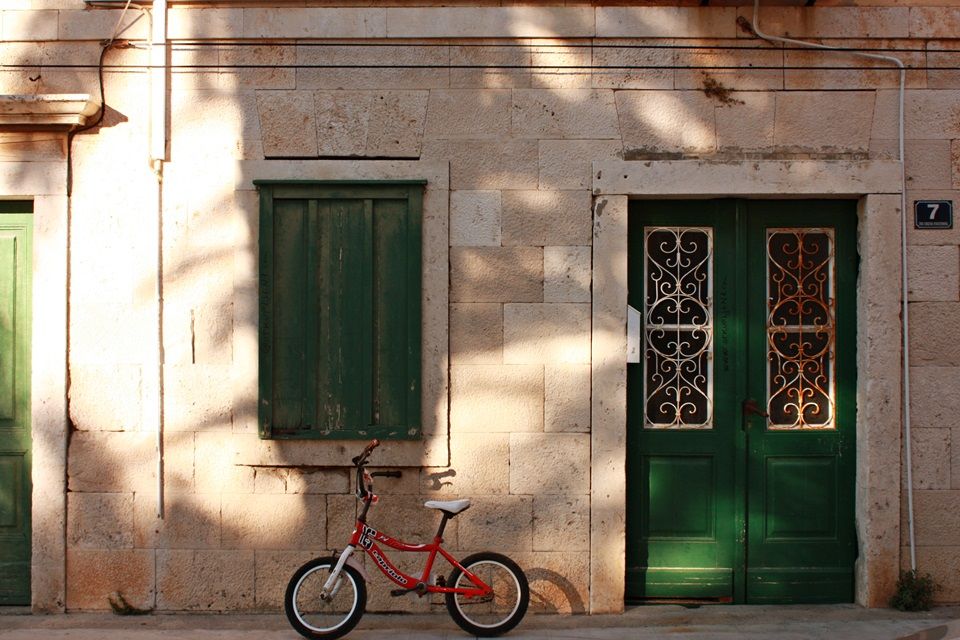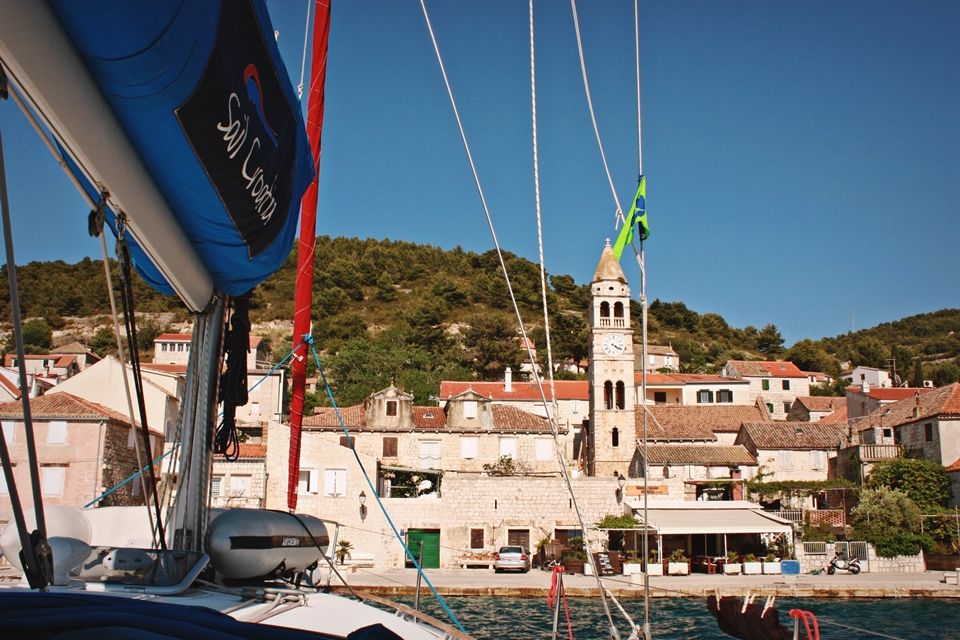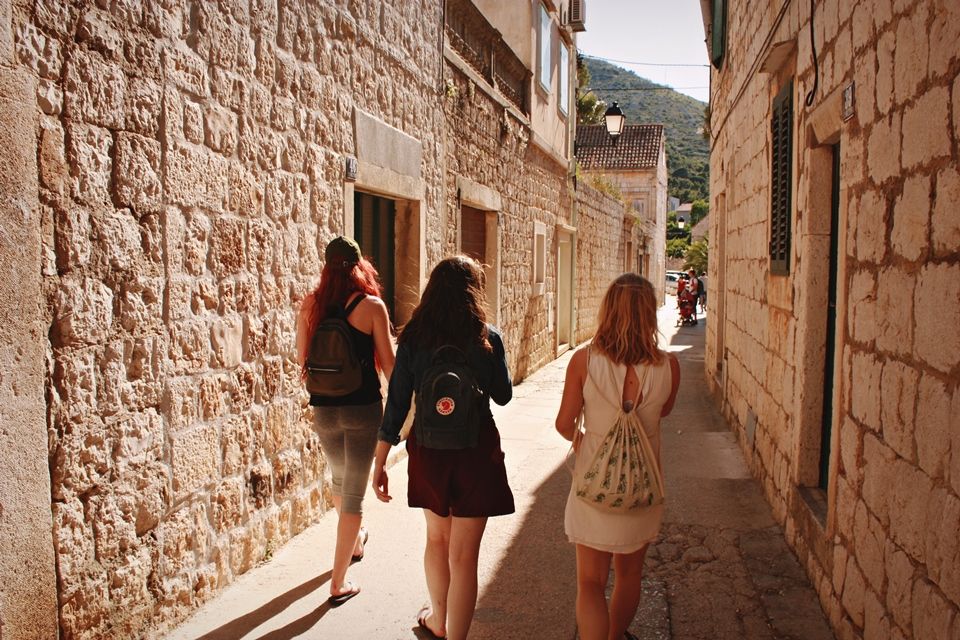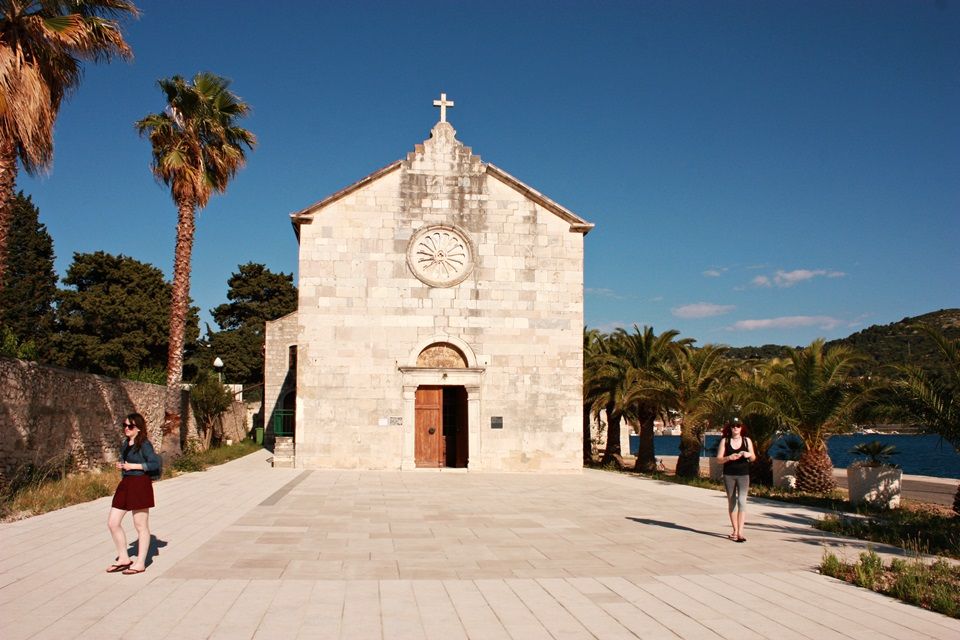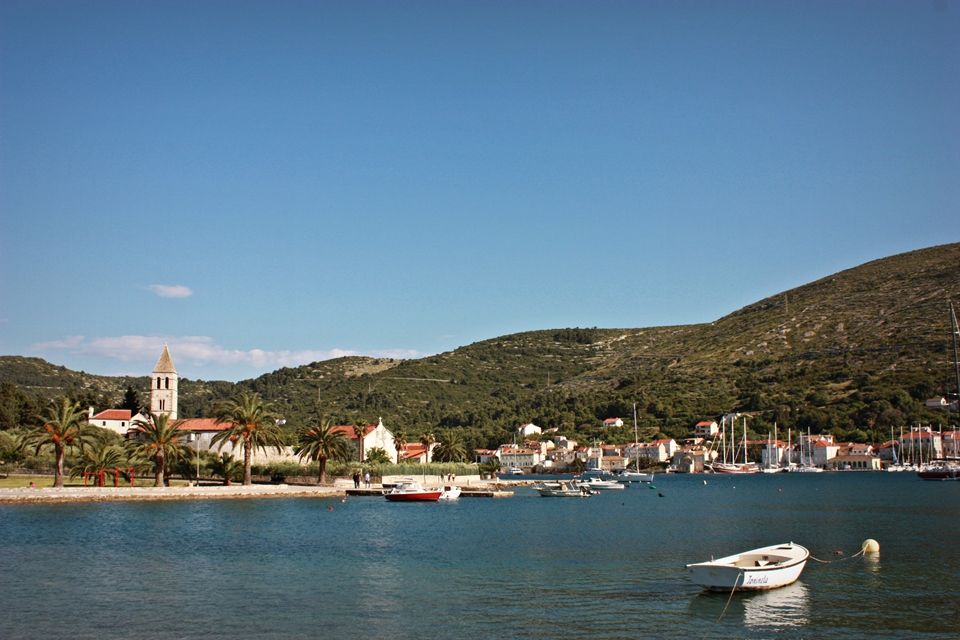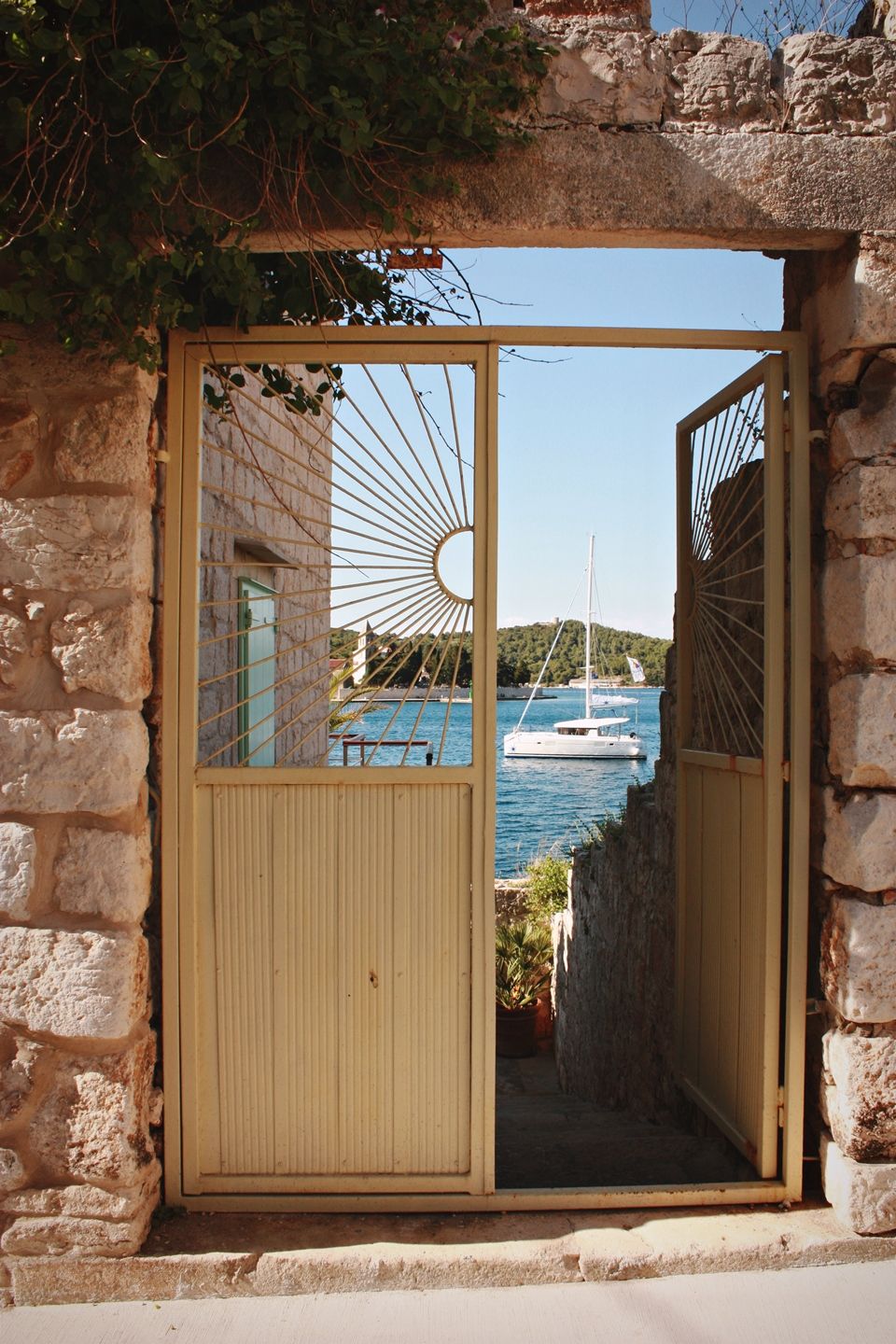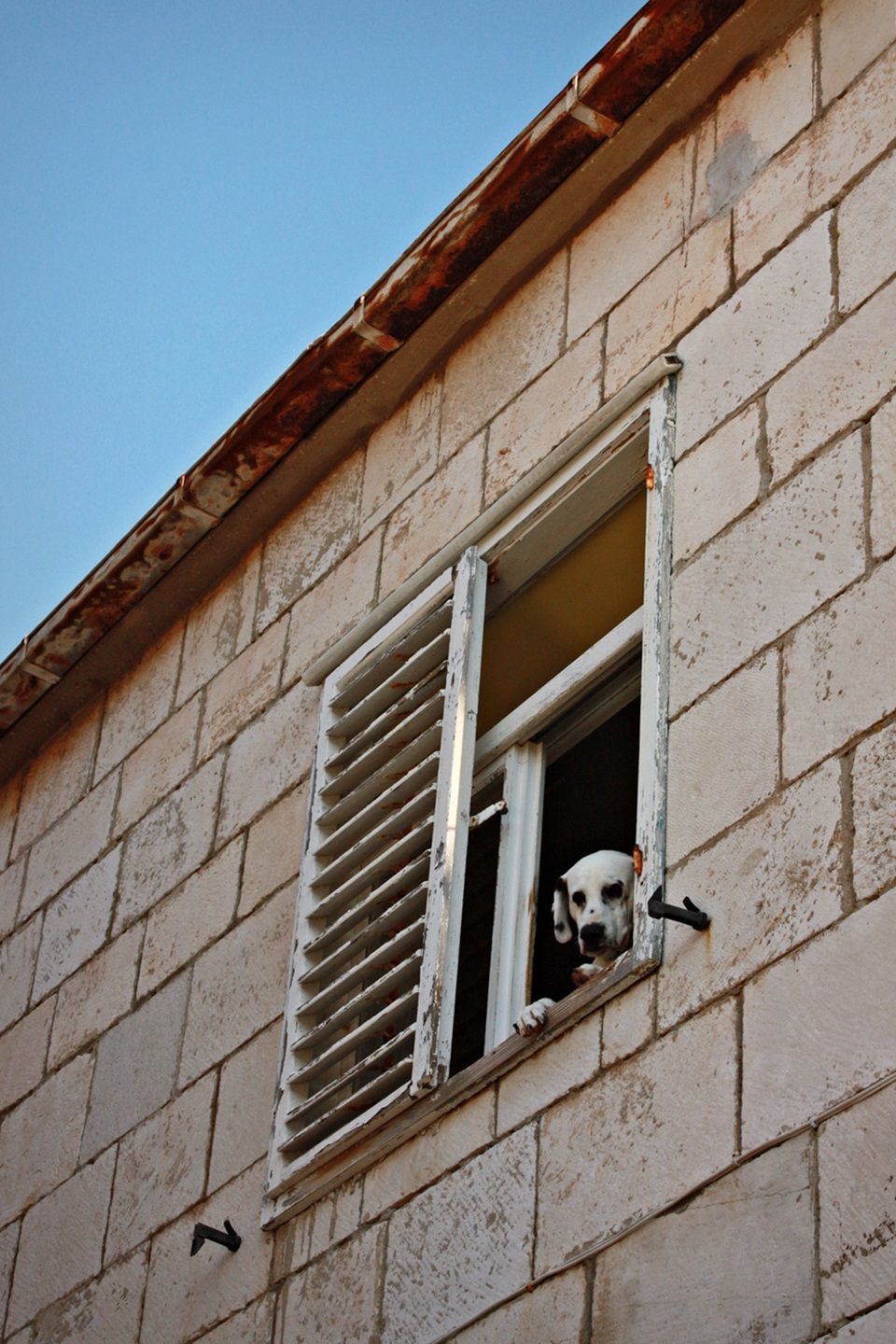Last week I took part in a week-long Green Sail tour by Sail Croatia. After writing about the tour here and sharing some tips on how to pack and what to expect here, it's time for the fun part: the itinerary and all the fabulous destinations we visited.
Day one - Bobovišća
We set sail from ACI Marina in Split around 3 p.m. and it took some 2 hours to get to Bobovišća.
Bobovišća is a small bay and village on the Island of Brač, with only 60 people living there. It is the perfect, peaceful bay to anchor and relax. We moored, cleaned a nearby beach (positive tourism) and went to have dinner at the tavern, Konoba Vela. While we were walking around, we were admiring the interior of a fortified manor house when the owner invited us in, proudly showing off her family's home from the 17th ct (known as Marinčević-Gligo summer house), with a traditional kitchen, a đardin, and a very friendly dog.
Bobovišća is also known as poet’s bay because this is where famous Croatian poet, Vladimir Nazor, was born. The village used to serve as a port for the exchange of goods during the Greek period, and it is thought to have been a necropolis for the nearby village of Rat.
We had dinner at the tavern right next to the Riva, with deep Dalmatian voices singing "klapa" songs and drinking wine - it doesn't get more traditionally Dalmatian than this.
We bought some snacks at a tiny local store (which opens when someone visits it, whenever that might be) that had one item of everything. We hopped on from one boat to another, got to know each other and the group dynamics slowly began to form.
The first night went ok, after you learn not to get up suddenly the hard way, hitting your head approximately 8 times.
Day two - Vis
Day two started with us trying to figure out how to work a gas stove, with the skipper eventually having to help us because we were lost. Coffee was made, breakfast was had, it was a gorgeous morning at Bobovišća and then we began one of the longest legs of our journey - heading to Vis.
On the way there, we passed a tiny island called Mrdulja, famous because every year boat owners from Šolta and Brač line their boats up and pull ropes to see whom the island should belong to. You can read more about it here.
We stopped along the way to dip in for the first time in 2017 and it was freezing! We got to Vis some 3 hours later, reaching some of the most turquoise waters I'd ever seen. We cleaned another beach and some of us swam to reach the boat, the other group told me that a man started yelling at them. They thought it was because they did something wrong, but it turns out he was thankful because we cleaned the beach and he offered us 5l of wine as a way to say thank you. See, kids, nice guys don't finish last (well, they might if they drink every litre of the wine).
I tried explaining that he wasn't 'angry yelling', that's just how islanders speak, but they weren't convinced, especially after we reached Vis port and the guy from the port authority started shouting at our skippers; the group thought he sounded really angry, but he was actually trying to help us. Note to those visiting Croatia for the first time, Croatians may seem surly from the outset and sound like they are always yelling at each other, but this is just the Dalmatianway - voices are loud, swear words are used freely, but it is all in good jest. Never judge a book byt its cover, take the time to see beneath first impressions.
We docked our boat in Kut and slowly ambled our way towards Vis town (a mere 15-minute walk). Along the way we saw beautiful stone houses, Roman baths and remnants of a Roman theatre; we all loved the chill, tranquil atmosphere.
Vis is the farthest inhabited island off the Croatian mainland and, up to 1989, it was closed off for foreigners because it served as a military base, with 30 military buildings on 90 km square of space, including an underground military hospital and a tunnel for military ships to take cover in. The strategic importance of Vis was known throughout history, so it changed owners many times: it was founded as a colony of Syracuse, Sicily, in 4th ct BC, the conquered by the Romans. After that, it was under Venetian rule for 4 centuries, conquered by Napoleon for a short period as well, after which the English Navy turned it into an important merchant port. The island was then ruled by the Austrian Empire since 1814, after the end of World War I, it was under Italian rule, and after that, it was ceded to the Kingdom of Yugoslavia.
Two very important naval battles took place here:
in 1811, a small Royal Navy squadron under the command of Captain William Hoste, defeated a larger French squadron in the Battle of Lissa (1811)
in 1866, the smaller Austrian fleet, under Admiral Tegetthoff, attacked the Italian fleet, under Admiral Persano, defeating the larger Italian force and sinking the Italian ironclad Re d'Italia in the Battle of Lissa (1866).
It was occupied by Italy 1941 - 1943 and then Germany 1943 - 1944. It was liberated by the Partisans under the command of Tito in 1944 and it served as a military base since then.
Fun fact: during the Napoleonic wars, when the British navy was stationed here, bored servicemen took up cricket, starting the oldest cricket club outside the UK, dating back to 1811. Credit for the re-birth of cricket in Croatia goes to Robert Dumančić and Ivan Bilić, who started up cricket in Croatia in 1998 almost 190 years after the game was played on Vis.
A Dalmatian in Dalmatia
That's it for Days 1 & 2, stay tuned for more - we're visiting Palmižana and Hvar next!

